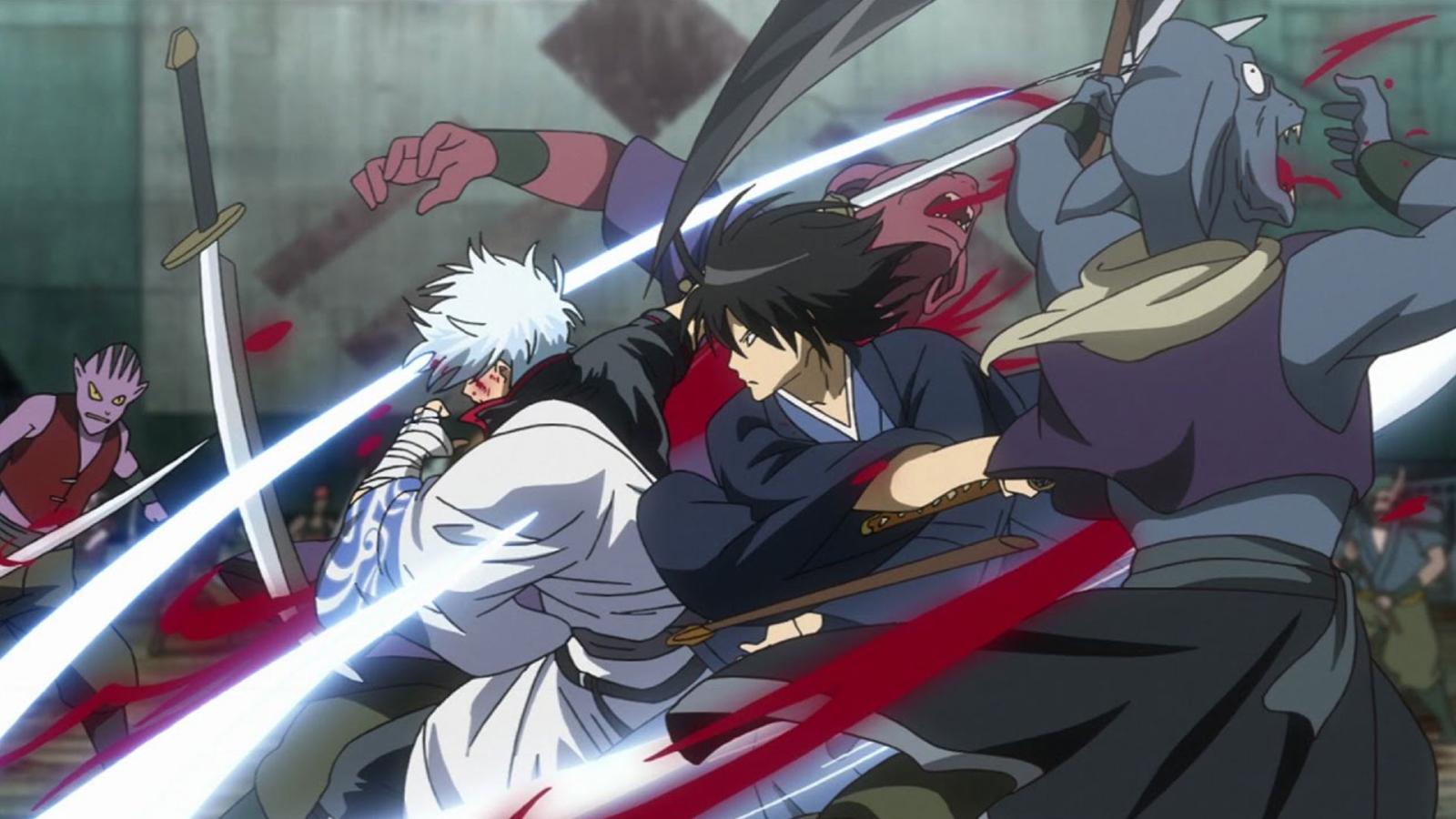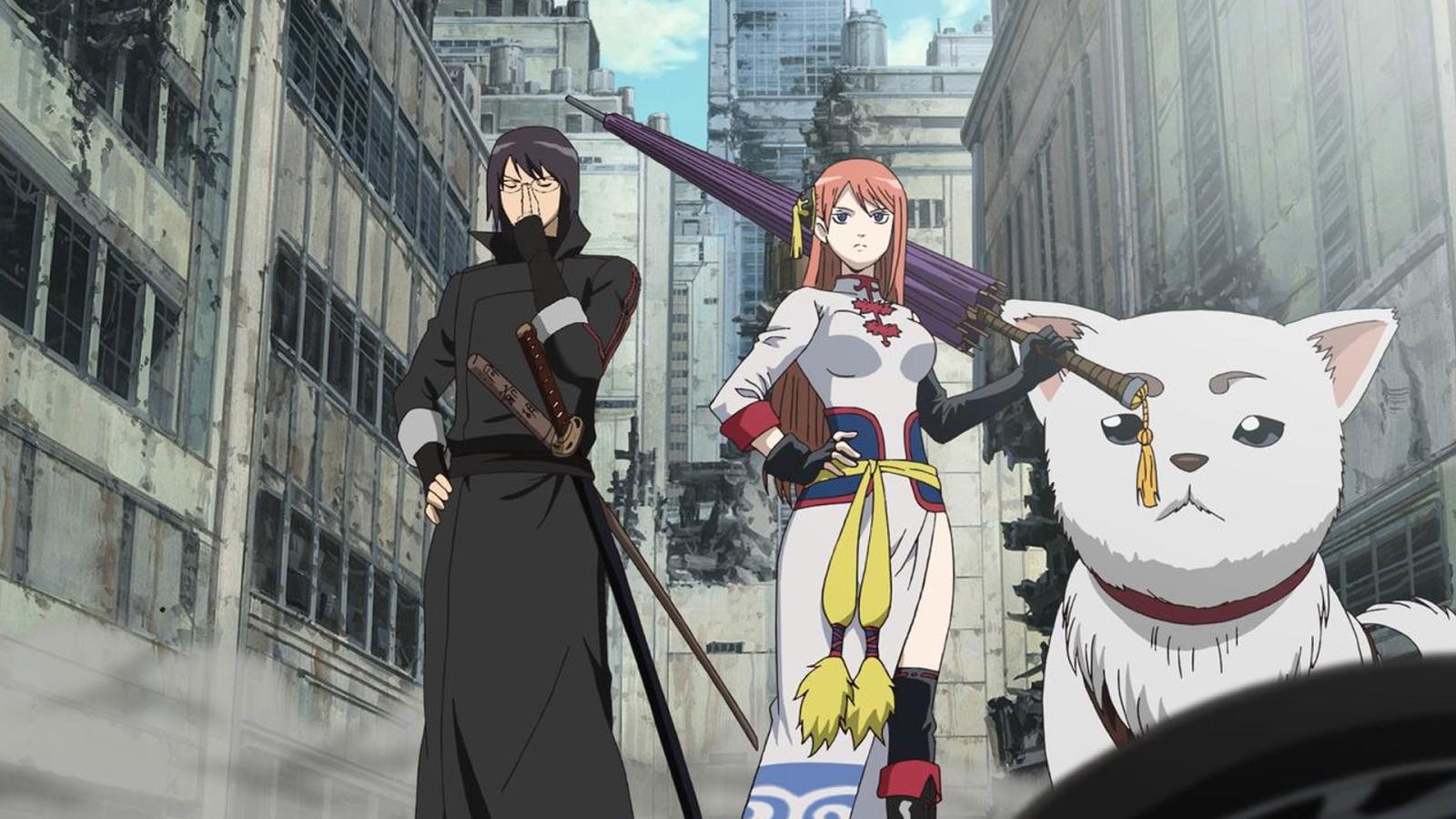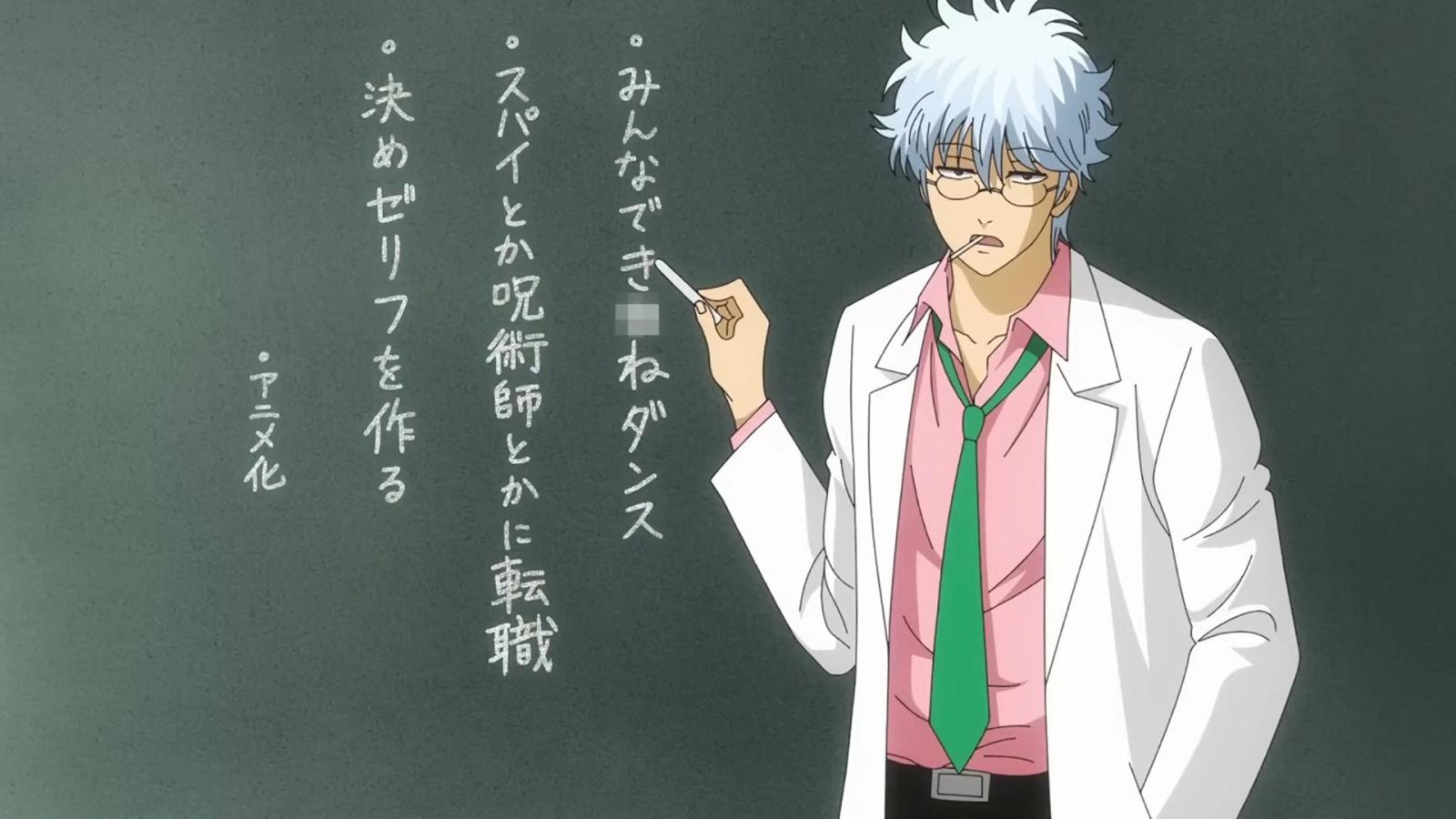And its journey didn't end.
Summary:
- Gintama was released at a very interesting time in 2003 and now celebrates its 20th anniversary.
- It's a dialogue-heavy story that mixes together seemingly unmixable things.
- The anime adaptation upped the hilarity to 11 and helped the story gain more fans.
- One of the movies released in 2013 was supposed to be a finale, but it wasn't.
- The real finale was made and released during the COVID-19 pandemic, and it affected its quality.
- This March it was announced that Gintama will be back with the anime based on its school-setting spin-off.
- More activities will be announced at Jump Festa on December 16th and 17th.
On December 8, 2003, Weekly Shounen Jump's cover was graced by a trio of new characters — a red-haired girl, a bespectacled boy, and a white-haired samurai. This issue was filled with series that had already established themselves as bangers — One Piece had been there for some time, Death Note started a week earlier, and on top of these two were Naruto, Prince of Tennis, Bleach, Eyeshield 21, Ichigo 100%, YuYu Hakusho, Kochikame. A manga like Gintama might have been out of place among these stories.
No one will mock you if you mock yourself
Gintama is pretty self-conscious. It constantly jokes about being weird, an outsider, not even eligible to become one of the titles of Shounen Jump's Big Three. Yet it stayed in the magazine until completion in 2019 (okay, it jumped from Weekly Shounen Jump to Jump Giga and then to the app, but still) and spanned 77 volumes and around 700 chapters.
The author of the manga, Hideaki Sorachi, constantly berated his story in the first chapters, but its wittiness captivated the hearts of the people. It was a funny story with great dialogue and decent art, one that didn't have the suspense of Death Note but allowed people to relax and laugh. Dialogues are the driving force of Gintama: they rely on puns, sometimes on old-fashioned or nearly forgotten Japanese vocabulary, and lots of them definitely were lost in translation (which still is not complete by Gintama's official publisher in the US, Viz Media).
But the Japanese audience liked them, and as the story further developed, it became apparent that Sorachi, being a bookworm, not only got himself a huge vocabulary but also ingested a lot of knowledge that allowed him to make Gintama not just a gag manga, but a manga that was able to balance the funsies with the seriousness. It's in its premise: who else would've thought to combine historical settings with sci-fi elements?
Samurai are brave, and so is the anime focused on them

It was popular enough to receive an anime adaptation: it was announced first at Jump Festa 2005 with a short animation, and on April 4, 2006, the first episode of the show graced the screens of the TVs. The first episodes, however, were fillers that were released as a thank you to the audience that supported the manga: the real story starts in episode three. At first, people thought that Gintama would be placed in the late-night slot as it contains a lot of dirty jokes, but somehow the series received a prime time 7 PM slot, and that helped it gain a huge audience.
Gintama is a very dialogue-heavy manga, and sometimes it can be very tiring to read, so for those who didn't want to deal with the printed words, the anime was the perfect solution, as the adaptation almost doesn't sway away from the manga. Sure, there are some anime-original episodes and changes, but they're surprisingly welcomed by the audience (aside from the final movie, but we'll get to that later).
Gintama anime was bold. There was no other series that had a three-minute-long still frame at the beginning of the episode with voice actors chatting and explaining that the studio didn't have enough budget to animate the characters, so they had to fill the time talking. There were no other anime series that dared to show rough animations and sakuga, saying that the animators didn't have enough time to finish the episode.
The self-awareness of manga became much more tangible in the anime, the fourth wall completely non-existent, yet the story stayed captivating. It wasn't a mere gag show with occasional action — and, by the way, the anime made action scenes much more brutal and visceral than they were in the manga, thanks to studio Sunrise's huge experience. It's a character-driven show, we've talked about it, and these characters are so multifaceted (even those that are laughed upon by others for being cliché), that you can't help but stay with them, both in gags and in pain.
Big screen success

The manga run wasn't the smoothest, the jokes on the cancellation of both the manga and the anime were perpetual, and we almost had the story finished in 2013 with the movie called Gintama: The Movie: The Final Chapter: Be Forever Yorozuya, but it didn't happen. The movie is a wild ride, a mix of heavy drama and dirty jokes, something that only Gintama can make feel organic. It's full of cultural references and deeply humane questions, and we're happy that it wasn't the last we've seen of Gintama. It has an original script, as the events of this story are not depicted in the manga, but it fits in the narrative perfectly due to the carefully thought-out plot.
It wasn't the first movie: one of the main serious arcs, Benizakura Arc, was adapted into a feature-length film with 16:9 resolution and some reanimated scenes in 2010. It was teased for a few years, with constant jabs at One Piece movies' success.
The anime didn't adapt the whole manga into the series. The last chapters were left for the movie. And it could've been great if not for the pandemic, as it was announced in 2019 but released in 2021. Quality-wise, the movie isn't great: a lot of content has been cut, the animation feels stiff, and fans relentlessly ask the studio to do a remake. But it has concluded the story of Gintama perfectly.
It's not over yet!

Or that's what we thought. Because in March 2023 it was announced that Gintama would return with a spin-off anime series — Class 3Z Ginpachi-sensei (3-nen Z-gumi Ginpachi-sensei). It follows the same characters reprising new roles: while the majority of them became school kids, some, including Gintoki, became teachers — he is now Ginpachi-sensei who teaches the Japanese language and literature. The anime is based on the series of light novels, official spin-offs written by Tomohito Osaki which are as deranged as the original manga.
We will probably learn some news about the release date and other anniversary-related activities at Jump Festa 2024 which is scheduled for December 16th and 17th. As one of the gifts for the anniversary we have already received a theatrical version of the Baragaki Arc that graced the Japanese cinemas in November.
Gintama's journey was rocky but filled with fun. And we hope it will stay the same with the new anime and other activities.

